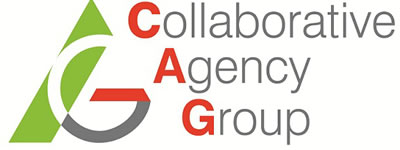
11 Jun Bill Eager

Speaker: Bill Eager
Internet Pioneer and Technology Expert
Topics:
- Social networks are changing the world
- The future is here… and it looks great!
- Cloud Computing, Google Apps and Real Time Video
- Technology to Enhance Sales Force Productivity
- Technology and Leadership
- Technology and Healthcare
Bill Eager is an Internet and technology pioneer. He has spent the past twelve years researching, writing, speaking about and implementing electronic communication systems. In addition to writing Using the Internet, the second book about the Internet, Bill Eager has written ten books about technology including best-sellers The Information Payoff, The Information Superhighway Illustrated, Using the World Wide Web, and NetSearch.
Bill Eager regularly gives keynotes, presentations and workshops about technology at national conferences, company and organizational meetings. He has led workshops that focus on business solutions for executives of corporations including JO Edwards, Novartis, Citibank and INVESCO. He has been a keynote speaker at major conferences including Internet World, Society of Consumer Affairs Professionals, International Inflight Association, International Association of Fairs, The Society of Information Management, Council of Engineers, Scientist and Society Executives, and International Expositions. Because he combines a thorough knowledge of technology with a fun and interactive presentation.
Today, Bill Eager helps international clients learn about and take advantage of the practical business applications of the Internet. Bill Eagerhas helped some of the nation’s leading companies including Kaiser Permanente, Columbia Healthcare, RE/MAX and TCI International design and implement interactive Web sites that provide communication services to employees and clients.
Social networks are changing the world
As I was quoted in USA Today we are quickly moving from a few large social networks to hundreds of thousands of them. In fact we are getting an entirely new lexicon built around the use of online social networks. We talk about friends, blogs, apps, widgets, avatars, tablet computing and viral marketing.
There are already more than 1 billion participants on social networks. There are social networks for teenagers, business executives, athletes, everyone. This explosion is directly tied to the benefits that people realize. Social networks create an interconnected planet where people rapidly congregate; share ideas and information; socialize; work on projects and conduct transactions. Humans are social creatures. We enjoy communicating and networking. It is the foundation of career and business development.
Social networks mirror the activities that occur in the real world but they happen faster and at much greater distances. Simultaneously, new media creates opportunities to leverage social networks in ways that were unimaginable a short time ago. For example, cell phones which capture video and seamlessly connect to online social networks empower individuals to share information and experiences with either a small, dedicated group immediate family and business colleagues, or with millions of individuals around the planet. Further, mobile e-commerce (mcommerce) creates an entirely new retail channel. Consumers now spend more than $20 billion a year on mcommerce.
The mobile environment brings new and exciting applications to social media. For example, use an application on an iPad or mobile phone to geo-locate people in your social network. Find a friend or business colleague that is only a few blocks away and invite them to have a coffee. Yes, there is definitely a potential for unwarranted invasion of privacy with this always on, always connected environment. It is the responsibility of each individual to safe guard their virtual presence. This not only changes the way we communicate as humans; but also the way we live, work, conduct business and play.
In this lively and interactive workshop, social networks, the new media and their implications for individuals and organizations are explained in simple, down-to-earth language. We look at historic and current examples that highlight how proper understanding and use of these technology trends can provide a significant competitive advantage. Participants learn how social networks and new media impact their lives and organizations. Case studies and examples illustrate the issues and the powerful applications.
The future is here… and it looks great!
As we look around we cannot help but notice the constant and rapid changes achieved by advances in science and technology.
What is science fiction last year becomes reality today. Office buildings can now report their energy usage to a central database where real-time monitoring can automatically make adjustments to maximize efficiency. The Google car uses a combination of artificial intelligence and GPS systems to drive itself. Cloud computing brings every application and file directly to your location 24/7. Your television, computer and central heating system can now share information via the Internet and wireless networks. Web cams show us live images from around the globe as Twitter messages stream out of repressed societies and online teachers use Skype to share knowledge with students they never meet.
Technology continues to have a dramatic impact on our society, our lives and our workplace. But it is not technology that dramatic improves productivity, living standards or communication for individuals and organizations. Rather, it is the appropriate understanding and application of technology.
The future is about networks. Networks of people in online and offline communities. Networks of systems and technology. These real world and virtual networks create an interconnected planet where people can rapidly congregate; share ideas and information; work on projects and conduct transactions. We look at historic and current examples that highlight how proper understanding and use of technology trends can provide a significant competitive advantage.
In this lively and interactive presentation, new technologies and their implications for individuals and organizations are explained in simple, down-to-earth language! Participants learn about the ongoing evolution of technology and its impact upon their lives and organizations. Case studies and examples illustrate the issues and the potential applications.
Cloud Computing, Google Apps and Real Time Video
This workshop examines how managers can help their companies and organizations use the Internet to enhance internal and external communications, increase productivity and online sales and reduce expenses.
The Internet has become an essential communications tool that can accomplish several important tasks. Companies now use the Internet to help internal audiences and customers access information and data ranging from shared project documents and calendars to online ordering, billing and shipping.
While cloud computing has been with us for more than a decade, we are now seeing practical applications that are extremely cost effective. The success is based on the fact that high bandwidth access is now available in many locations and the software has dramatically improved in terms of security and usablility. The Internet Cloud has several useful applications both for individuals and organizations.
Technology to Enhance Sales Force Productivity
This interactive presentation explores how technology creates opportunities to dramatically enhance the sales process. Whether for new or existing accounts, the sales process involves research, lead generation, ongoing communication, negotiation, and customer relationship management. Participants learn specific techniques that dramatically enhance every aspect of the sales process – both individually, and as an organization. A lot of technology is already in place in organizations. The challenge lies not in purchasing more technology, but in discovering keys to the effective use of the technology that is already available.
The latest applications for customer relationship management (CRM) tie directly into the sales process. And, with remote access of prospect and client data, the sales force is empowered to access critical information from any location and share client interactions in real time. Combine, for example, Apple’s GPS enabled iPad with Google apps for contact management, calendaring conferencing and the sales process can be dramatically enhanced in the field.
Technology and Leadership
This workshop delves into the unique and important relationship between technology, communications, organizational effectiveness and leadership. The goal is to gain an understanding of how technology can be used for a variety of applications that enhance productivity and improve communication. Leaders must be responsible for the appropriate development and use of technology to create organizational efficiencies and competitive advantage.
Time is one of the most valuable aspects of our professional and personal lives. We take a close look at specific information and communication technologies that can make a significant impact on our ability to get things done quickly and efficiently.
From your laptop or iPad to the latest Google Apps and online sales contact databases, etraining and workgroup software – these tools make our life easier if we know what is available and how to use them properly.
We all know, simply “throwing technology” at a problem doesn’t always result in more efficient time management. In fact we often get buried in e-mails and voice mails and have less time to do our jobs. The problem is not the technology, but rather our use of it. We review the practical applications of the communication tools that are available, and learn how to be more effective and organized with these tools. We then examine how these communication technologies impact the dynamics of communication, workflow and leadership within a company or organization. Learn how available tools can save a significant amount of time and money as you and your teams learn to work faster on projects and create a culture of effective communication.
Technology and Healthcare
Employing over 12 million workers with an anticipated expansion of up to 20% over the next four years, the healthcare industry is the second fastest-growing sector of the U.S. economy Yet health care is in a state of tremendous change. Intensified demands for achieving cost reduction and improved quality of care is felt most significantly by healthcare workers.
Employing over 12 million workers with an anticipated expansion of up to 20% over the next four years, the healthcare industry is the second fastest-growing sector of the U.S. economy Yet health care is in a state of tremendous change. Intensified demands for achieving cost reduction and improved quality of care is felt most significantly by healthcare workers.
Technology will play a significant role in the way that the healthcare workforce locate and perform their jobs at every level within provider organizations. This interactive presentation provides an update on the current state of the technology in healthcare. Participants learn how issues of employment, job performance, continuing education, universal patient records, remote diagnostics, rural healthcare, workplace illness and stress are forever being changed with technological improvements.



